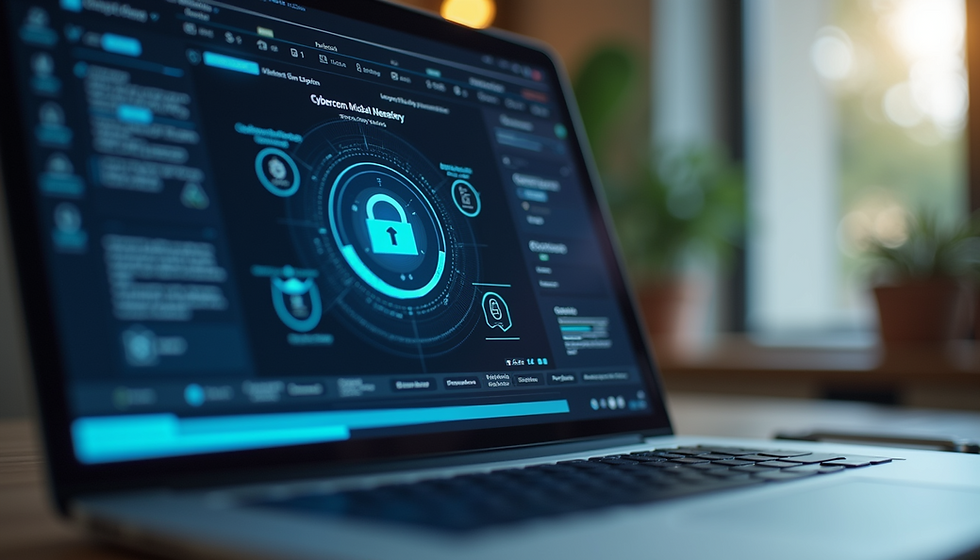Exploring 2FA and Other Effective Methods for Securing Your Data as an SMB Owner
- John W. Harmon, PhD

- Jun 24
- 3 min read
In a world where small and medium-sized businesses (SMBs) are increasingly targeted by cybercriminals, securing your data is not just an option; it’s essential. Cyberattacks have surged by 31% in just the past year, making it crucial for SMB owners to stay vigilant. Among the most effective security measures available is Two-Factor Authentication (2FA). However, this is just one piece of a broader puzzle. Let's dive into 2FA and additional key strategies that can help you keep your business safe.
Understanding Two-Factor Authentication (2FA)

Two-Factor Authentication (2FA) enhances security by requiring two distinct factors to verify a user's identity. Typically, this involves two elements: something the user knows (like a password) and something the user has (like a smartphone or hardware token). By adding a second layer of authentication, 2FA drastically reduces the chances of unauthorized access.
According to a report by Microsoft, enabling 2FA can block over 99.9% of account compromise attacks. This statistic shows how much of a difference a second factor can make for SMB owners looking to protect sensitive information.
Different Types of 2FA
While 2FA is widely used, its implementation can vary significantly. Here are a few common options that SMB owners can consider:
SMS Text Messages: Users receive a one-time code via text message. This method is user-friendly but may be vulnerable to interception.
Example: A company using SMS 2FA requires employees to enter a code sent to their phones when logging in. However, attackers could potentially hijack a phone number and access this code.
Authenticator Apps: These apps, like Google Authenticator, generate time-sensitive codes that users enter to log in. This method is generally more secure than SMS since codes are not transmitted over a network.
Example: An employee uses Google Authenticator to get a code that changes every 30 seconds, ensuring a high level of security.
Hardware Tokens: Devices like YubiKeys provide an extra layer of security by requiring physical access to authenticate. While these tokens can be more expensive, they offer substantial protection against cyber threats.
Biometric Verification: Fingerprint recognition or facial scanning can serve as secure second factors. Businesses can implement these technologies to heighten access security.
Each of these methods has advantages and disadvantages. SMB owners should evaluate their specific needs to select the most suitable option.
Additional Data Security Measures
Aside from 2FA, many other strategies can bolster your data security. Here are effective measures that any SMB owner can adopt:
Regular Software Updates
Keeping your software updated is vital to maintaining security. A staggering 60% of data breaches occur due to outdated software. Automatic updates can help ensure your software is always current, which reduces the risk of cyberattacks.
Strong Password Policies
Encouraging strong password usage can significantly reduce vulnerability. Passwords should be complex, including a mix of letters, numbers, and symbols. Companies may also want to require employees to change passwords every three months and disallow the reuse of old passwords.
Example: A business requiring eight-character passwords with at least one uppercase letter, one number, and one special character can increase their security stance.
Data Encryption
Encrypting sensitive data, whether stored or transmitted, adds crucial security. According to the International Association for Privacy Professionals, data breaches cost businesses an average of $3.86 million. Encrypting data ensures that even if a breach occurs, stolen information remains unreadable without decryption keys.
User Education and Awareness
Training employees on data protection is critical. Research shows that 95% of data breaches are due to human error. Regular workshops on recognizing phishing attempts and securing devices can help build a security-focused culture within your business.
Backup Strategies
Regularly backing up data is crucial to mitigate data loss. Ransomware attacks often result in irretrievable data; without effective backups, businesses can struggle to recover. Aim to back up data daily, storing backups in a secure, offsite location.
Monitoring and Incident Response
Implementing a proactive monitoring system can help detect suspicious activities early. A Security Information and Event Management (SIEM) system can identify anomalies that indicate potential threats.
In addition, a clear incident response plan is essential for quickly addressing data breaches. Your plan should include steps for detecting, containing, and recovering from a cyber incident, which can significantly reduce damage.
Final Thoughts
For SMB owners, prioritizing data security is vital to protect your business and clients. Implementing strategies like Two-Factor Authentication, strong password policies, regular software updates, and effective backup solutions can strengthen your overall defense against cyber threats.
By cultivating a security-conscious environment through employee education and vigilant monitoring, you not only protect your business but also foster trust among customers and partners. The effort you invest in bolstering your security is well worth the peace of mind it brings, knowing your data is protected from potential threats.




Comments